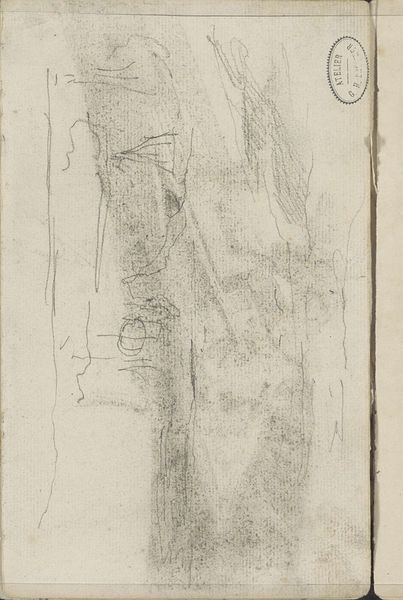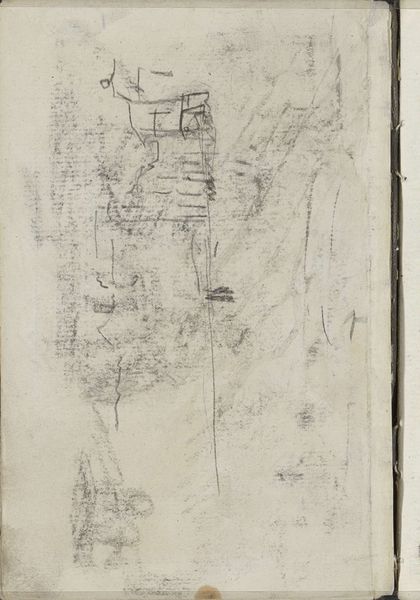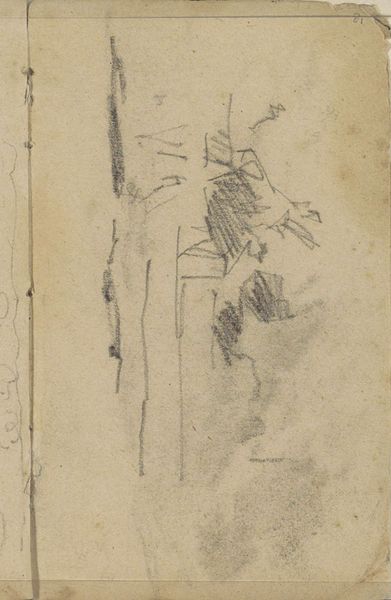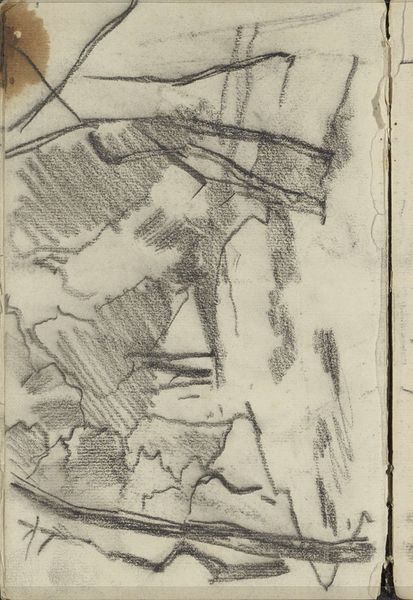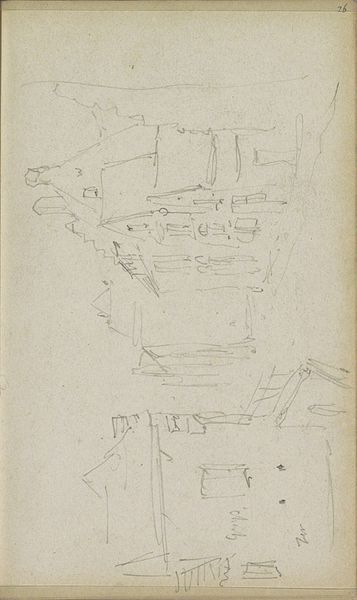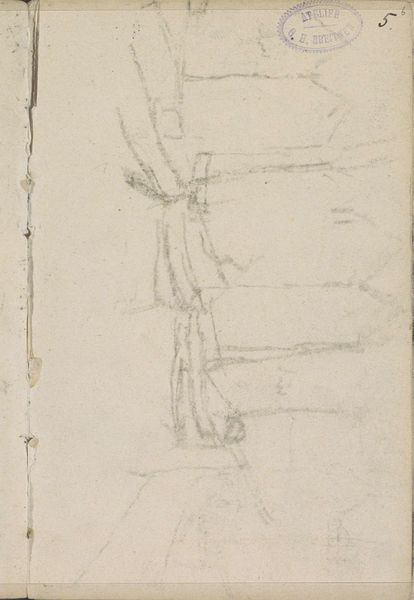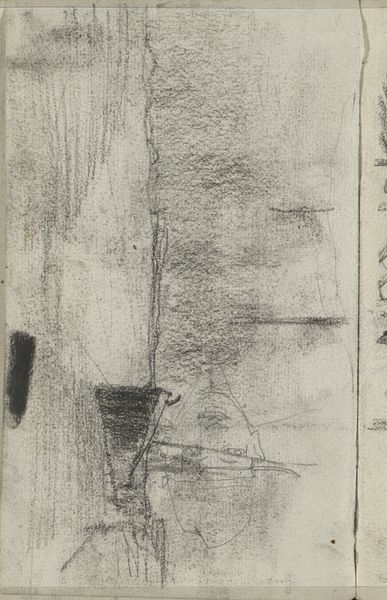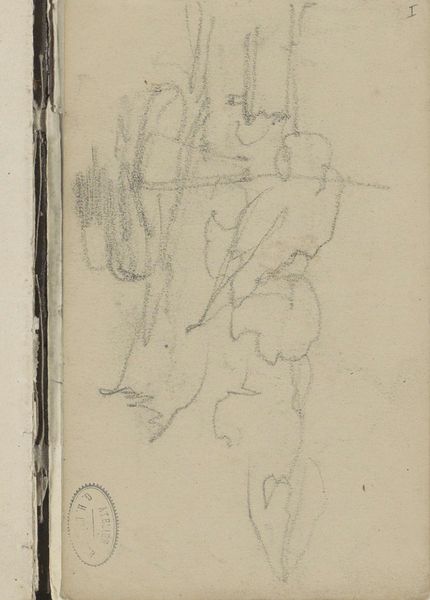
Copyright: Rijks Museum: Open Domain
Curator: This pencil drawing, called "Studie," roughly translates to "Study," and was created by George Hendrik Breitner around 1909. It currently resides in the Rijksmuseum. What strikes you about it initially? Editor: My first thought? Ghostly. Like a faded memory trying to resurface. The pencil work is so ephemeral, those lines are barely there, and the composition feels… incomplete. Like a half-remembered dream that’s dissolving as you wake. Curator: It’s interesting you say ghostly, because, in a way, that's the nature of sketches, right? It is about searching for form. You can see Breitner, through the act of layering pencil strokes, figuring out exactly what he wants to define or let fade away. Editor: And how those layers tell a story about the materials and labour. This is not about virtuosity; it is the plainness of graphite on paper revealing a process of recording, and perhaps revealing an economy of means dictated by financial constraints or just a different valuation of finished vs. unfinished work? The casualness belies its skill. Curator: That's insightful. The casualness is almost daring. It feels raw and immediate, but consider the amount of labor compressed into what appears effortless, it takes command to render so many visible searching lines with precision. Editor: I see that, it also feels of its time. Consider that in the early 20th century, ready-made pencils became easily available; art materials democratized the whole landscape of art production. An artist like Breitner could sketch everywhere—the very ephemerality captures the mood of early modernity. Curator: Exactly. So this simple “study” actually offers a portal into a specific cultural moment and the material conditions that shaped artistic practice, or to push against artifice to search for truth? It brings into focus themes and artistic process. Editor: Yes, it's less a polished piece and more a document of artistic labor; a material residue that can speak volumes. I might need to rethink "ghostly" now, more like material evidence. Curator: So perhaps it embodies its title more fully, revealing both study and an essence captured in mere pencil lines. A wonderful artifact of a thought in action, so to speak. Editor: Absolutely. From ethereal apparition to document, the work gives an immediate impression but continues to invite thought.
Comments
No comments
Be the first to comment and join the conversation on the ultimate creative platform.
